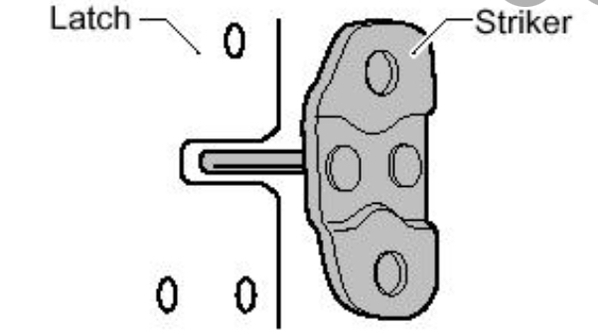Not sure what exactly what’s the problem, but my door lock doesn’t work trying to lock it manually, the actuator/linkage arm won’t extend all the way to lock in place… except when I move the door striker to its farthest position by hand.
Replies sorted oldest to newest
Have you done any maintenance on this or it out of the blue?
The door lock mechanisms are a bit finicky, looks like you need to adjust the short rod from the door handle with the white plastic square. Pop it off the ball and shorten or lengthen until it overcomes the resistance to lock / unlock.
For me it looks like it works as must be, the stricker always must have 2 clicks .
Maybe your striker on the door post is adjusted wrong and when you close the door it gives 1 click the door lock cannot came into the lock position.
when the upper mounting screw from the lock mechanism is to long , it also not will work .
Not needed to take the window out , only one bolt on the lower of the slider inside the door and a screw just above the door lock mec. on the outside of the door and you can take out the slider .
Sometimes the slider rubber is glued , but take out only the steel slider part.
Window must be into the closed position.
After 50 years it is entirely possible a door lock has been changed. Does your key operate the other door and the trunk lock?
Larry
Larry, the movies shows that this lock works.
Simon
Simon,
Riley said in his first post-
”First off, the key won’t turn”
🧐
Larry
@lf-tp2511 posted:Simon,
Riley said in his first post-
”First off, the key won’t turn”
🧐
Larry
Because the stricker was not turned into the lock position , (2 clicks)
Simon
Simon has the answer. The lock won't engage until the strike is rotated to the "door closed" position.
John
 The …striker… is the “pin” attached to the B pillar. It does not move.
The …striker… is the “pin” attached to the B pillar. It does not move.
The …latch… is attached to the door. The portion of the latch that engages with the striker is the part that moves.
I understand Riley’s …latch… mechanism moves. I was not talking about latch movement.
Reilly said his …key… would not turn.
I just inspected 2511. It does not matter what position the latch is in; a correct key will always turn.
His latch mechanism may well need adjustment.
Also, after 50 years, his key and lock cylinder may be mis-matched.
Larry
Attachments
you can see into the video that by one click the key not turns, on click 2 the key turns.
when the striker is adjuted too far inside the latch clicks only one time .
Adjusting the latch outwards has the result that the latch clicks 2 times when you close the door.
Simon
None of the videos show a …key… moving.
What is shown in the videos is the gray pot metal piece (it has a ball on its short arm that engages with one of the plastic pieces at the end of the short rod) at the rear of the lock cylinder moving.
that short arm CAN be moved by turning the key, and ALSO by pulling the door lock knob up or pushing it down
The fact that it moves does not indicate the key is correct for the lock cylinder
RILEY ‼️‼️ Please chime in and clarify exactly what you meant when you said
the key won’t turn
Larry
Ah, ok, than if you have luck spray some WD40 or other creep oil , inside the key cilinder , try to get in and out the key several times , maybe the brass pins are bestuck , otherwise take out the cylinder place the key in the cyinder and grind the brass pins what are sticking out.
Then the cylinder is modified to your key.
Traditional lock lubrication is done with powdered graphite. It comes in a small squeeze tube resembling a toothpaste tube.
There is a specific aerosol made for locks that goes by the name Houdini. A web search will find it, it is not very common.
any petroleum-based product, such as WD-40, will act as a lubricant but will also act as an attractant for dust and it will gum up the lock in the long run.
Larry
@lf-tp2511 posted:Traditional lock lubrication is done with powdered graphite. It comes in a small squeeze tube resembling a toothpaste tube.
There is a specific aerosol made for locks that goes by the name Houdini. A web search will find it, it is not very common.
any petroleum-based product, such as WD-40, will act as a lubricant but will also act as an attractant for dust and it will gum up the lock in the long run.
Larry
At Larry's Recommendation, I got Houdini. You can get it on Amazon.


